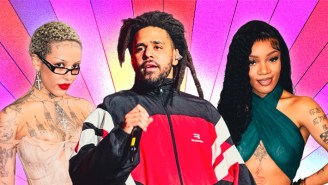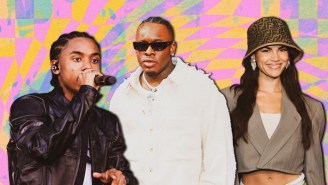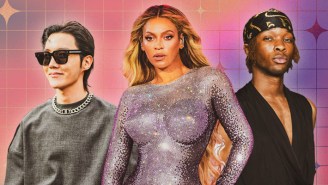The 2015-16 NBA Season starts soon, preseason hoops are in full swing, and playoff prognostications have begun in earnest. Since season previews can get bogged down by team-specific minutiae, and we cover every basketball team, we’re providing our readers reasons why you should care about all 30 teams in the Association.
DIME MAG’s 2015-16 NBA Season Previews
You asked for it, Larry Bird. After growing tired of Indiana’s creeping pace and the big man who helped turn them into a defensive juggernaut, President of Basketball Operations Larry Bird decided enough was enough.
It was strongly hinted that Roy Hibbert opt out of the $15.5 million he’s owed on the last year of his contract, but why would he? There’s no way he gets that on the open market, no matter how impressive his verticality. So he was dealt to the Lakers for next to nothing and now we’ve got a roiling Paul George controversy at the four.
It’s not that the Pacers were wrong. It’s just that with PG-13 out of the lineup, they were even more miserable to watch last season. Bird sits in the crowd with Kevin Pritchard and (occasionally) Donnie Walsh. They heard the groans every time a possible 3-on-2 break didn’t materialize as the team walked the ball up the floor, called out a play and kept things at a snail’s pace. It’s how they were most effective before this past season without their star.
But after acquiring Monta Ellis in free agency and dealing Hibbert, they’ve got the lineup they want, with Paul George at the four, C.J. Miles at small forward, Monta at the off-guard and a loudly bleached George Hill running point.
Will the running work? Will PG-13 survive the season at the four, banging down low? Will Frank Vogel be able to stomach the sieve their defense turns into if Ian Mahinmi or rookie Myles Turner (limited a bit in preseason with knee soreness) can’t make up for Hibbert’s absence at the rim? The Pacers might be a lot more fun to watch next season, but their success at the transition is far from a foregone conclusion. Still, watching them try will be fun for fans bloated on a steady diet of slow-it-down basketball.
Paul George, starting power forward
The ripple effect in basketball is endless. There isn’t a single move – be it a misstep, substitution, injury, draft pick, offseason development, and so much more – that doesn’t influence the one to come. This sport is indeed a team game, but it still produces outcomes that rely on the minute success or failure of individuals.
Everything matters, all the time.
The Indiana Pacers shocked the NBA world when they officially announced a long-discussed plan to start Paul George at power forward. It doesn’t make sense on the absolute surface. The 25-year-old isn’t just a two-time All-NBA honoree on the wing, but has also played just nine games since gruesomely breaking his leg in August 2014.
And the Pacers are asking him to bang with big men on a nightly basis? Robbing him of the comfort afforded by playing the only position he’s ever known? That’s not the best way to treat a franchise player, the thinking goes, and George confirmed those thoughts by openly questioning the move both when training camp began and following Indiana’s first preseason game.
But after reassurances from team president Frank Vogel and coach Larry Bird – not to mention additional practice and exhibition experience in the Pacers’ revamped schemes – he’s since come around on the switch. League followers, though, remain skeptical, and will be until Indiana wins enough games to render their concerns moot.
That’s a short-sighted way of looking at basketball. Everything matters, all the time – remember? George’s move to the 4 is about much more than leveraging the individual advantage imminently presented by multi-skilled, highly athletic 6’9 forward with a seven-foot wingspan. It’s not only about him, but the Pacers as a whole.
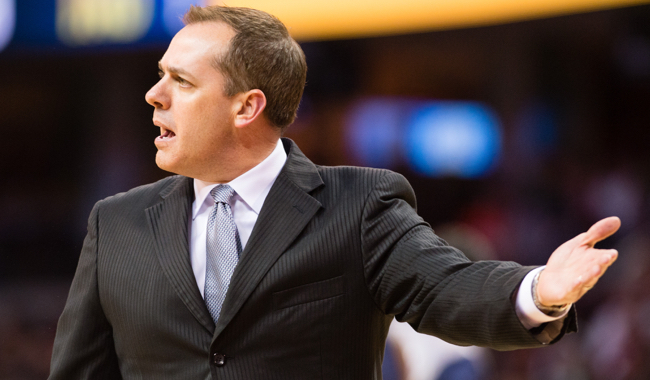
Indiana wanted a stylistic overhaul after George’s injury robbed it of another chance to get over the hump in the East, and initiated it by letting frontcourt stalwarts Roy Hibbert and David West go this summer. Every other personnel decision Bird and Kevin Pritchard made supplements the idea behind George stretching the floor and creating mismatches as a nominal power forward – for the short and long term.
Monta Ellis feasts as a pick-and-roll penetrator and in the open court. Myles Turner protects the rim and adds the threat of outside shooting from center. And Jordan Hill is a playable rotation big man whose contract expires at the end of this season.
The Pacers topped out at not quite good enough when they were zigging as everyone else was zagging. And what was the surest way to immediately drastically alter their fortunes while remaining competitive? Asking George to make the move that still might have been for him regardless.
The jury won’t be out on this hot-button decision for some time. George deserves as much time to re-acclimate to the game as Indiana does to adjust to new personnel and a wildly disparate two-way ethos. Until the dust has settled, though, we’ll remain firmly in favor of George playing the 4 – and continue expecting to see flashes confirming that notion throughout this season, too.
Going small happens on both ends
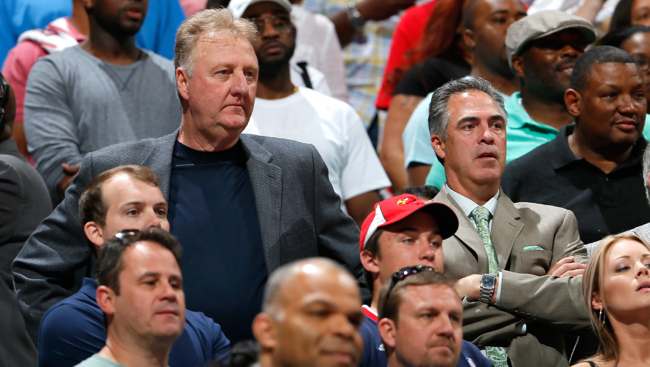
In six preseason games so far, the emphasis on scoring the ball has paid off, at least on that end of the court. They’re the third most effective team in the NBA, with only the now-healthy Thunder and a blitzing Wizards squad scoring more per possession in preseason play. But their normally staunch defense has gotten less effective as their offense has improved. Uh, yeah — this wasn’t exactly an unintended consequence. Logic says that as they focus more on offense, their defense will suffer. The question is how much.
They’re slightly better than average on defense in the preseason, a far cry from last season (No. 8), and certainly from 2013-14 when George was healthy and they allowed the fewest points per possession in the entire league.
Is it worth it? If the Pacers really do score as effectively as they defended the last few seasons, than yes. But that’s a tall order, especially with a lineup that’s short on offensive firepower once you get past Monta and PG-13.
Ellis is a pick-and-roll Ubermensch. He can slide into the lane after a high screen whenever he wants, and because he got so effective in the mid-range during his time in Dallas, it’s impossible to just go under the screen. He’s streaky, sure, but that works both ways. He’s also one of the best non-dunking finishers ever. (Go back and look at some of his layups when he was in Golden State; they were bonkers.)
In just 36 half-court possessions during preseason, he’s in the 87th percentile on offense, via Synergy. On the other side of the ball? He’s in the 20th percentile. And really, that’s the risk? Will Indiana’s tiny lineup with George banging at the four be able to compete against a team like San Antonio with two real bigs?
Even for teams like Golden State, who spurred this whole small ball revolution, their small-ball four, Draymond Green, is up to the challenge on the defensive end. It’s just not clear that George ever will be. He’s been middling so far in the preseason, at least when opponents have gone at him.
George is the fulcrum for this whole thing, as my esteemed colleague already explained. The Pacers will only go as far as he’ll take them. We just hope he stays healthy in a NBA key that’s no place to blanch at contact. If PG-13 can stomach it, the Pacers will return to the playoffs and even make some noise. If he can’t, things could come to a head between the executives and their star.




